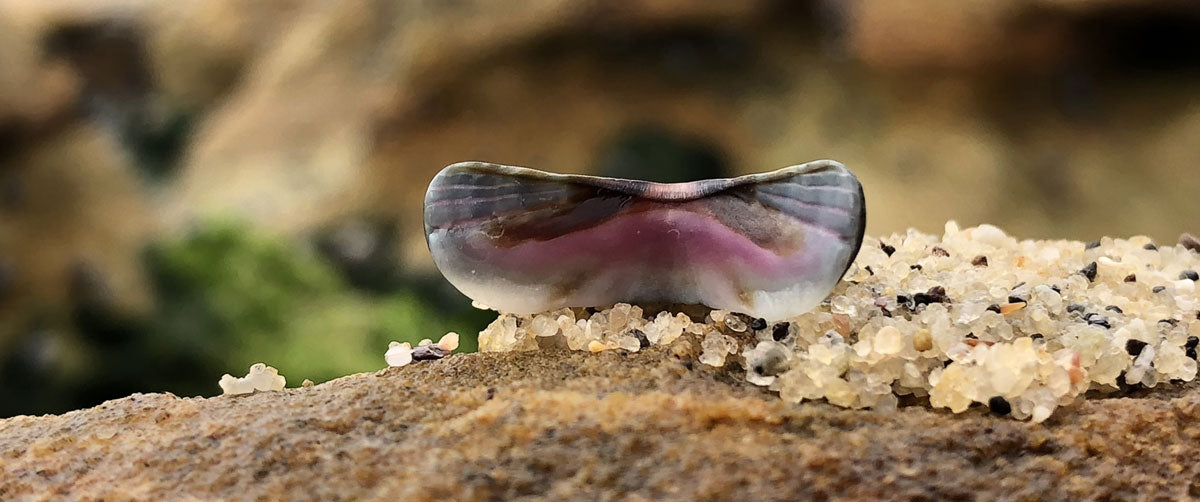Colorful Chiton Shells
By Maureen Wyer

I remember finding my first little funny-shaped chiton shell only a year or two ago on one of my favorite beaches in Sydney. I was so surprised and amazed that nature could produce such beautiful pastel and vibrant colors in a shell. I found the variety of blues, purples, pinks, and greens on these tiny plates so beautiful I began to collect and photograph them. I have since become a little obsessed.

The odd chiton plates are sometimes referred to as “butterfly” shells or “mustache” shells, but I like to call them “Angel wings.” I don’t recall exactly when I made the connection that these individual shells came from the chiton mollusk, but I remember finding my first live chiton on the rocks and thinking of the wonderful contrast. It’s so strange that such a colorful shell can come from such a brown bland creature, and that we only get to see these gorgeous shells once the chiton has died, dried up, and fallen apart.
Chitons are related to slugs and snails, sometimes referred to as sea cradles, and they are usually grey-ish or brown. This makes them tricky to find, as they camouflage with the natural rock colors where they live. You are most likely to find them near rock pools or hiding under rocky areas on the beach. This is where they find their main food source, microalgae.

The chiton is made up of eight overlapping shell plates composed of a calcium carbonate mineral called aragonite, and surrounded by a leathery-looking girdle. The many I have found are about 2 inches (5 cm) in length. These clever mollusks are quite flexible and can protect themselves by rolling into a ball if dislodged from the rocks or attacked by predators. Fish and seagulls like to eat them and feed on their muscular flesh, but their suction on the rocks makes it hard to dislodge them and eat the underside.

So beachcombers beware: chitons are strong. When they attach to something they can sometimes be very hard to remove, so it’s best to refrain from moving them or disturbing them. They are latched on tight to survive the surge of ocean waters and tides. If curiosity wins you over, then you must be careful when trying to move them, as it is possible to harm the chiton if you are too rough.
And yes, in case you are wondering, you can eat them—but they are not a common choice of food as the flesh is very tough and rubbery.

Chitons can be found worldwide, but here “down under” we have about 150 species, 90% of which are native to Australia. Now, I’m not sure if we only get these beautiful underside colors in the Australian species, but I would like to think most species produce these gorgeous colors.
So, if you are looking for a rainbow of shell colors to add to maybe some pink barnacles or violet sea snail shells, or looking for some wings for an angel, I hope you find some of these tiny vibrant treasures to add to your collection.
This article appeared in the Beachcombing Magazine September/October 2022 issue.
Learn more about seashells
Learn more about identifying shells, the history of seashell collecting, great shelling beaches, and the lives of the animals who make the shells we find on the beach. Articles ›
No live shelling: Be sure shells are empty and sand dollars, sea stars, and sea urchins are no longer alive before you bring them home.
1 comment
Thanks for this article! I found one of these relatively recent ago and wondered what it was.(on Kodiak,Island, AK)







